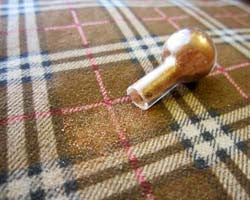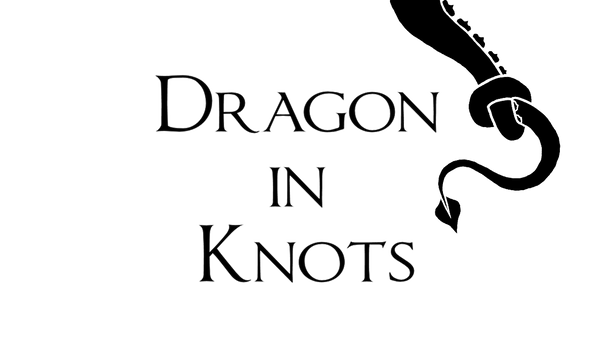
J.M. Barrie's Sherlock Holmes Parodies (Review)
Share
Sherlock Holmes is everywhere these days: movies, two recent television series, innumerable memes, online fanfic... In Arthur Conan Doyle's day, the situation was much the same, though the mediums have changed. Numerous Victorian writers picked up their pens to write parodies, pastiches, and even advertisements featuring their own version of Sherlock Holmes.
Today we are going to look at Sherlock stories by one of these writers: James M. Barrie. That's right - the guy who went on to write Peter Pan. Barrie and Doyle were friends. In fact, they were on a cricket team together along with writers P.G. Wodehouse, Jerome K. Jerome, and others. Only Doyle knew how to play cricket (Penzler 113).
Barrie wrote three Sherlock tales: "An Evening with Sherlock Holmes" (1891), "The Adventure of the Two Collaborators" (1893), and "The Late Sherlock Holmes" (1893).
"It is very simple," said Mr. Holmes, still eyeing me sharply.
"The easiest thing in the world," I agreed.
"An Evening with Sherlock Holmes" is the first of Barrie's Sherlock parodies. In fact, Penzler states that it is the earliest Holmes parody (193). The narrator, Mr. Anon, convinces Conan Doyle to introduce him to Sherlock Holmes. The narrator then proceeds to beat Sherlock at his own game, deducing his recent movements and his plans for the rest of the evening. Annoyed, Sherlock leaves abruptly.
In 1893, Barrie and Doyle collaborated on the opera Jane Annie. It was a flop. However, it inspired Barrie to write "The Adventure of the Two Collaborators," in which two authors, a "big fellow" and a "handsomer" one - presumably Doyle and Barrie, respectively -, visit Holmes and Watson to discover why their opera failed to draw an audience. Doyle acclaimed it as the best Sherlock parody ever and included it in his autobiography (Penzler 44).
“But I can tell you why the public don’t go to your piece without sitting the thing out myself.”
“Why?”
“Because,” replied Holmes calmly, “they prefer to stay away.”
In a variation on breaking the fourth wall, that barrier between the characters and the audience, Barrie breaks down the barrier between the author and his creations. He places Doyle and himself in the same world as Watson and Holmes. However, the four men don't interact as merely characters within the same story. Doyle is still the creator, and Holmes is the bestselling golden goose. (Highlight the following for SPOILERS.) Doyle can and does erase Holmes, and while disappearing Holmes predicts his financial downfall:
“Fool, fool! I have kept you in luxury for years. By my help you have ridden extensively in cabs where no author was ever seen before. Henceforth you will ride in buses!”

The third and last of Barrie's parodies, "The Late Sherlock Holmes," was first published in December 1893, the same month that "The Adventure of the Final Problem," which details the famous confrontation between Holmes and Moriarty at the Falls of Reichenbach in Switzerland, first appeared. In Barrie's version of events, which takes the form of a sensational exposé, Watson is arrested on suspicion of having murdered Sherlock, as the police and the public find his story of how Holmes died unbelievable.
The Falls are nearly a thousand feet high; but Mr. Holmes in the course of his career had survived so many dangers, and the public had such faith in his turning-up as alert as ever next month, that no one believed him dead.
(Highlight the following for SPOILERS.) Furthermore, the article states that police believe Watson to have been working with an accomplice, a doctor who derived a large part of his income from Holmes and had made statements indicating that he had "'had quite enough of Holmes.'" The article then casually mentions that Conan Doyle is currently in Switzerland.
The news story ends with an unintentional spoiler. Barrie cites rumors that Sherlock "at the entreaty of the whole British public" is back at Baker Street, solving another mystery. While we know that Holmes does in fact survive to solve more mysteries, in 1893 Doyle had no intention of bringing him back to life. Holmes would not return from the dead for a decade.
J.M. Barrie's Sherlock stories are short, witty, and hilarious. They provide a view into the friendship between two celebrated authors. It is clear from these works that Barrie and Doyle endured the trials of authorship together and were close enough to share in a laugh at their own expense. Barrie's parodies are well worth the read, and the laughs, for any Sherlock fan, and there's plenty of time to read them while waiting for BBC to finally release Series 4.
All three stories, along with many other Holmes parodies, appear in two recent collections: The Big Book of Sherlock Holmes Stories, edited by Otto Penzler, and Sherlock Holmes Victorian Parodies and Pastiches: 1888-1899, by Bill Peschel.
A special thanks to a friend for bringing these Victorian fanfics to my attention!


2 comments
Thanks Noël!
I haven’t watched the recent American Sherlocks. The BBC one is definitely not Doyle’s Sherlock – it’s a new, different Sherlock -, but they do work in a great many details from canon, even little things that most people forget, which makes it interesting.
Good review! I’ve shared this around social media!
Sherlock Homes was a favorite read when I was growing up. I’ll admit to not watching the recent / current versions in movies or on TV – partly because I’m convinced they won’t do justice … and partly because I’d rather read than watch.